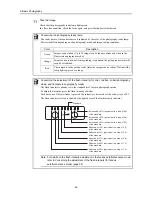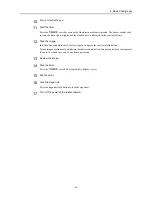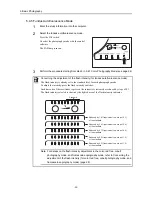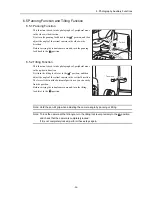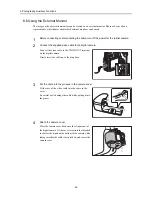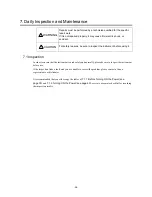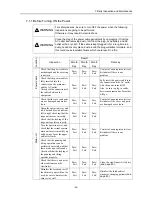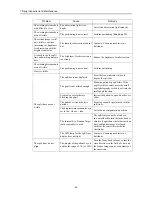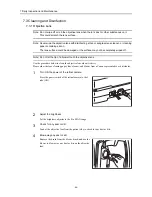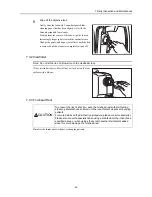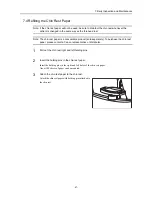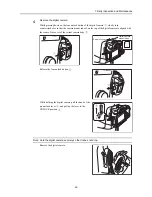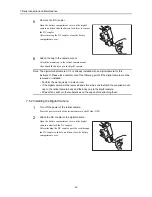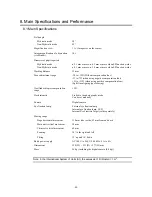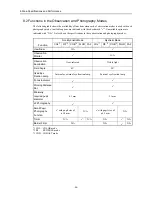
7. Daily Inspection and Maintenance
-42-
The working distance dots
are difficult to view.
The observation light is too
bright.
Lower the observation light intensity.
The working distance dots
are not visible.
The positioning is not correct.
Perform positioning
(see page 15)
.
The retinal image is still
not visible even when
increasing the brightness
for observation with the
brightness adjuster.
The lamp for observation is burnt
out.
Contact a Canon representative or
distributor.
It is hard to see the split
lines and working distance
dots.
The brightness for observation is
too strong.
Reduce the brightness for observation.
The working distance dots
are not visible.
The positioning is not correct.
Perform positioning.
Flare is visible.
The split lines are not
visible.
The split bar is not displayed.
Press the focus indicator switch to
display the split bar.
The pupil is not dilated enough.
Make the patient’s pupil dilate. If the
pupil is still too small, press the small
pupil photography switch to activate the
small pupil function.
Eyebrows or eyelashes are
blocking the pupil.
Instruct the patient to open his or her eye
wider.
The patient’s vitreous body is
unclear.
Focusing cannot be performed with the
split lines.
The diopter compensation lever is
set to the - side or + side.
Set to the no compensation position.
The Internal Eye Fixation Target
(sold separately) is used.
The split lines cannot be displayed.
In a case like this, turn the focus knob to
adjust to the position where the cross hair
lines and fundus image are clearly
visible at the same time inside the
viewfinder.
The LED lamp for the split lines
display does not light.
Contact a Canon representative or
distributor.
The split lines do not
align.
The diopter of the patient’s eye is
outside the range of -10 to +15 D.
Turn the focus knob to focus so that the
cross hair lines in the field of view and
the fundus image can be seen clearly at
the same time.
Problem
Cause
Remedy

